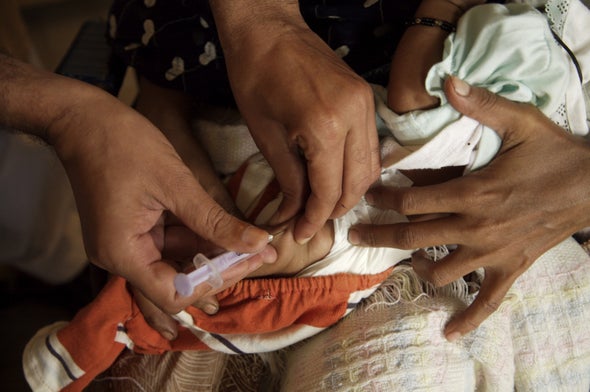In Africa and elsewhere, health resources should be focused on humans, not diseases
International Universal Health Coverage Day was on December 12. This year we are asked to keep the promise of health for all. But striving for a goal of universal health coverage requires us to rethink how we fund disease prevention and treatment. Traditionally, large sums of money have been pooled to address a single disease or a group of diseases that threatened the socioeconomic fabric of the world, and, most specifically, Africa.
In this sense, mosquitoes have their funding stream, polio has its funding stream, Ebola has its own, too. But the infrastructure on which all these funding streams rely on receive limited investment. Moreover, African resources are often considered to be insufficient. Yet without the human and physical infrastructures, supplemental domestic and external resources would not end diseases. So, while agencies and experts often communicate among themselves, they often compete with people working on other diseases for resources. To be sure, there are times this approach has seen tremendous progress. In Africa, for instance, polio eradication is a reality and demonstrates the ability of targeted resources to end a specific disease.
Yet, there are many times that diseases do not necessarily follow the money. For instance, the 20 neglected tropical diseases currently affect 1.6 billion people across the world. These diseases and others thrive because of poor water and sanitation and a lack of practical education on prevention. The paradox is that 1.7 billion treatments are available but resources and funds are limited to deliver these treatments to end them for good.
Parasites find unwilling but able bodies to carry the diseases that they breed. In the human journey, one encounters a number of obstacles that can be prevented. Universal health coverage aims to remove these obstacles. Yet, currently we still raise funds for specific diseases while we aim to ensure that everyone who accesses a health facility can be treated for any possible precondition or new disease. Thus, it is the ability to see the human body as a cluster of potential obstacles that would make it possible in our lifetime to achieve universal health coverage.
The world came together in Lyon to pledge 14 billion for the Global Fund. These critical resources will ensure that 16 million lives will be saved. But universal health coverage must force us to rethink the way specific diseases get funded while the rest scramble for their own health. Indeed, we are at a point in the progress to end diseases where we must realize that a life saved from AIDS, tuberculosis and malaria inevitably will be challenged by another unfunded disease. In other words, while the world thrives on lives saved, to some extent it ignores that the same life will encounter other diseases that erode the investment that was originally made.
Further, while health systems have helped in the fight against diseases, progress is hindered by the cyclical dependence on external financial resources in Africa and other parts of the world. To break the dependency, we need to define what universal coverage means to us in Africa and see it as an opportunity to put humans at the center of the disease system. And this is where the government and the private sector can play a role by leveraging dormant long-term capital— pension funds and social protection funds—to invest in domestically funded universal health coverage. Our goal must be that universal health coverage plans be funded by Africans so that supplemental resources can be directed towards jobs to be filled by healthy Africans.
For the private sector to play a role, there are three key enablers that must be delivered on:
First, the assets created by the government must be valued accordingly and used as collateral for long-term investments. Hospitals, clinics and other real estate belonging to the government have an embedded value.
Second, the predictability of funding must be coupled with the removal of political interference that may limit the ability of the repayments to be made. For example, a toll bridge ensures that, for a period of time, the investors recoup their investment. How would we ensure that the toll gates are affordable? Not with the current subsidy model of global health, but to ensure that jobs are created, and the global health conversation is no longer just about keeping people healthy but unemployed. Indeed, most diseases are diseases of unemployment, not poverty.
Third, African resources from the increasing number of people with disposable income on the continent and in the diaspora must be pooled to focus our attention on health issues in rural areas. The farmers, the majority of whom are women, must have access to quality affordable health care.
In global health and in the private sector, everything is about money. Universal health coverage requires long-term capital investment in our greatest assets, human beings. The private sector is ready to invest more resources, but it must be clear about the assets and the opportunity to create jobs for healthy people so that, over time, they take care of themselves.
Of course, even with the private sector more involved, ultimately, governments will remain the largest contributors to health in their countries. It is time we value their contribution, so their citizens understand that free health care comes, in part, from their own taxes. And tax collection remains abysmally low; most economies in Africa are below the minimum desirable tax-to-GDP ratio of 15 per cent.
Domestic resources for universal health coverage are necessary to ensure that health becomes an integral part of national development plans. And these plans can be financed using domestic resources as governments enact legislation to better use dormant capital and provide incentives for the private sector to make long-term investments in health care; such investments should target not only urban communities but, most importantly, communities at the last mile.

